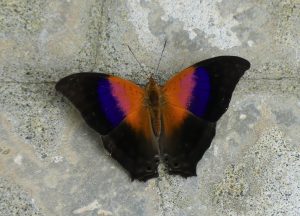Panama: Morphos, metalmarks, mimics and more!
Peter Hall, scientific advisor for eButterfly, recently traveled to Panama. Read about his adventure and the amazing butterfly observations he shared with eButterfly. “We ended up staying in three very different facilities belonging to the Canopy Family – the Canopy Camp in the Darien jungle to the east, the Canopy Lodge in the cloud forests to the west and the Canopy Tower in the lowland Canal Zone in the centre. Our main targets were the immense diversity of butterflies and birds found in this small country. All the facilities also had expert local guides who knew where to go and how to identify this diversity. By the end of our visit, our butterfly checklist stood at 225 species and bird list at 232. And that’s not even to mention the twenty-plus mammal species and countless other smaller life forms.”

